New CES 2017: ThinkPad X1, Razer Three-Screen Laptop, 6-inch Ockel Desktop and New Smartphones
On January 5, the annual Consumer Electronics Show 2017 started in Las Vegas. This year, the main trends were augmented and virtual reality - manufacturers began to sharpen smartphones specifically for Tango and Daydream VR, and also brought a lot of new helmets. Of the other new products: gaming laptops, an updated line of ThinkPad X1, smart glasses from Lenovo and a portable desktop with built-in screen.
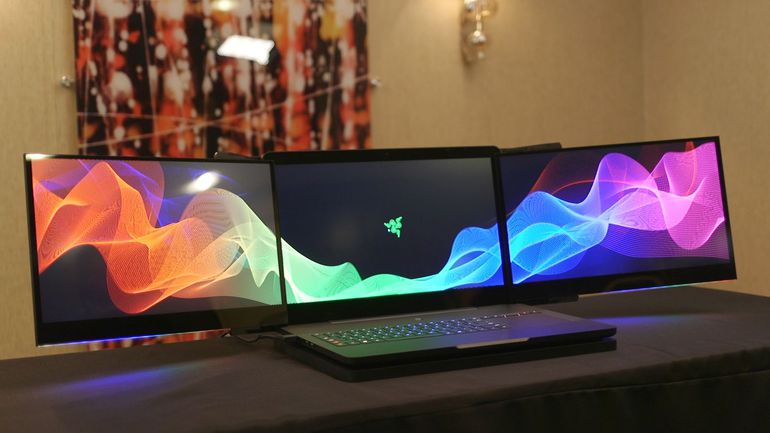
For some, mobility is important in laptops first. The lighter the device and the longer it is able to work on a single charge - the greater the chance that you will wear it everywhere.
The ultrabook ThinkPad X1 Carbon is the world's lightest 14-inch laptop in the class of corporate devices. Lenovo for CES 2017 has prepared an updated line of devices X1, which includes Yoga X1 transformer and tablet X1 Tablet.
')
The ThinkPad X1 Carbon weighs 1.14 kilograms. In the form factor of a 13-inch ultrabook, Lenovo has placed a 14-inch display - this was done by narrowing the frame. The battery, according to the manufacturer, will work for about 15 hours. Under the hood - the processor of the new generation Intel Core i7 Kaby Lake, up to 16 gigabytes of RAM, up to 1024 gigabytes of SSD. The display resolution is 1920x1080 or 2560x1440. In order to ensure security, an ultrabook was equipped with a fingerprint scanner and a face recognition system.
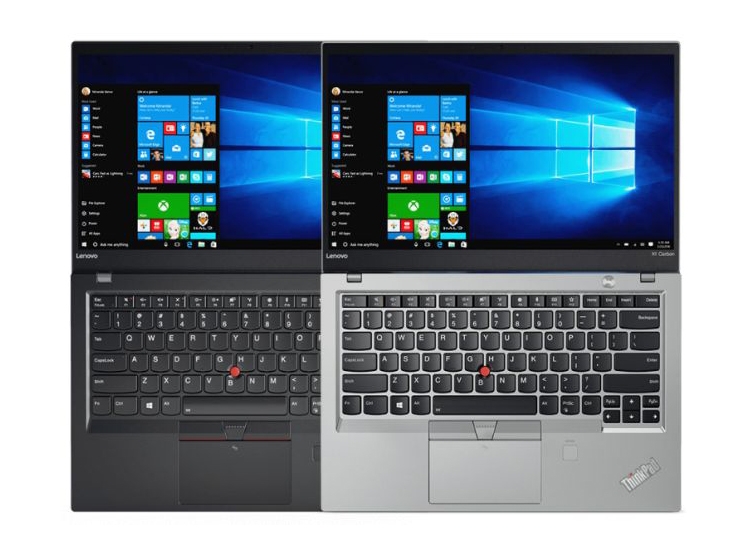
Lenovo X1 Yoga has similar characteristics and differs only in the presence of a touchscreen display, a transformer form factor, a stylus support and a slightly higher weight - 1.36 kg versus 1.12 kg in a conventional ultrabook.
The ThinkPad X1 Tablet transformer tablet received a 12-inch display with a resolution of 2150x1440 pixels, a 7th generation Intel Core, up to 16 GB of RAM and up to 1024 gigabytes of SSD. Without a keyboard, the X1 weighs 767 grams, with a keyboard - 1.07 kg.
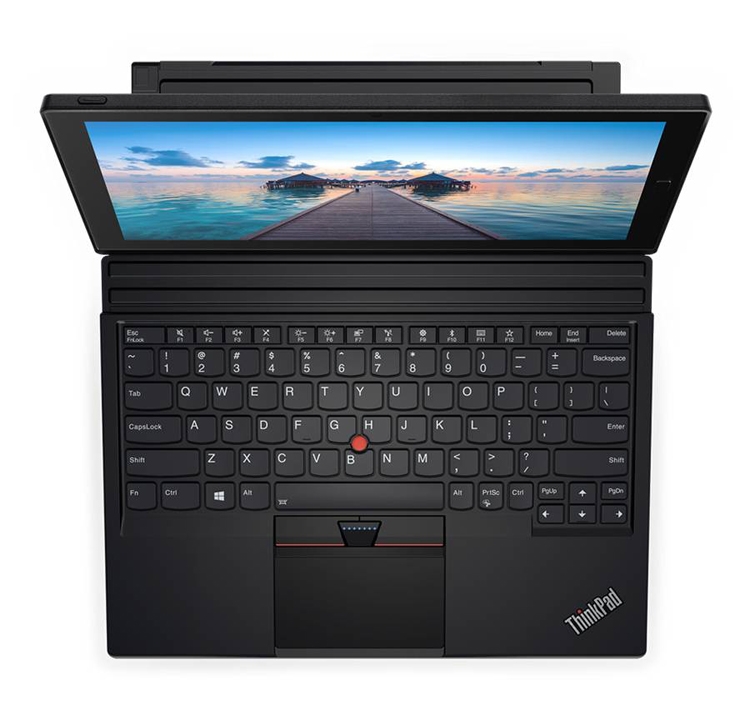
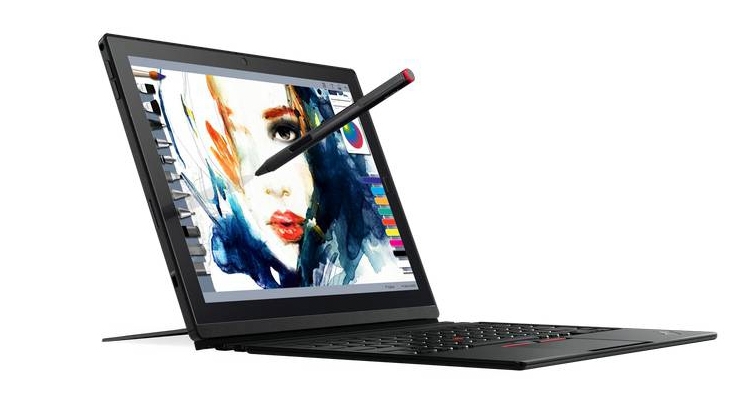

Dell introduced its response Lenovo Yoga - a transformer of Dell XPS 13. Mounts company chose the same as used at the beginning of Lenovo and HP 360 - the classic version. The processor in the new ultrabook - Intel Core i5 or i7, up to 16 gigabytes of RAM and up to 1 terabyte of SSD, and screens - Full HD or QuadHD +. The Windows Hello face recognition system is also here, as in Lenovo's X1.
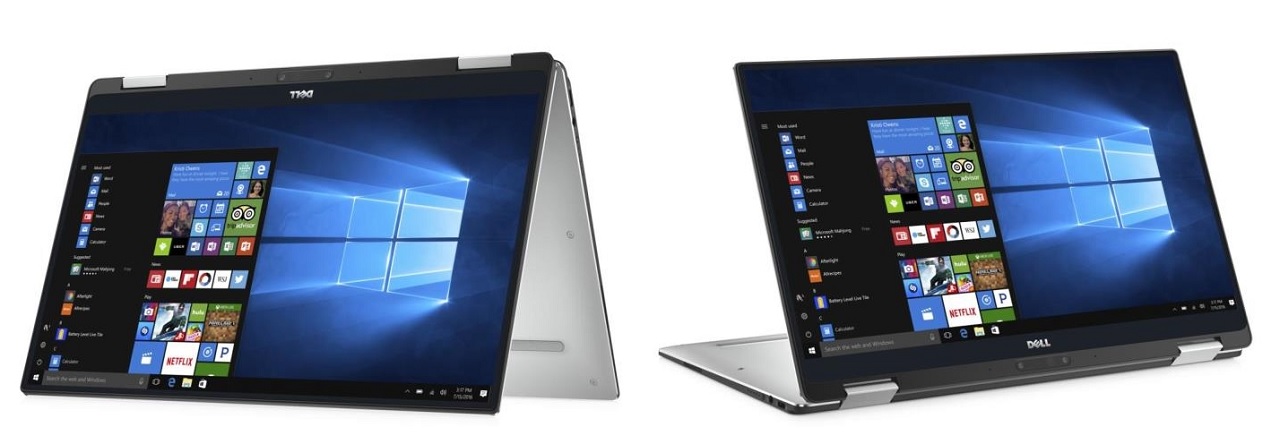

Asus also brought its own transformer, the Chromebook Flip C302A, on Chrome OS. The laptop runs on Core M3 or M7 processors, has a 12.5-inch screen with a resolution of 1920x1080 pixels, 4 or 8 gigabytes of RAM, 32 to 128 gigabytes of SSD. The device will be budget - the price for the lower package will start with $ 500.
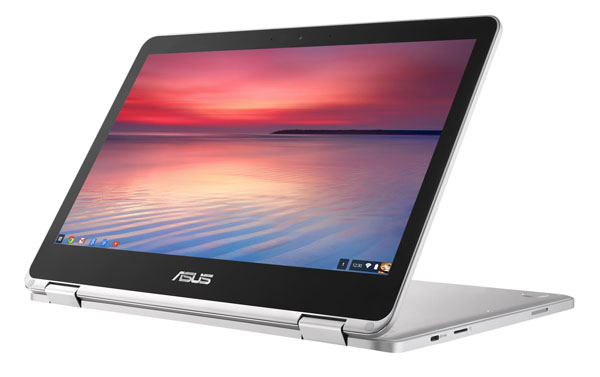
The line between tablets and laptops is becoming increasingly blurred in terms of technical characteristics. Tablet Lenovo Miix 720 in the maximum configuration is based on the seventh generation Intel Core i7, has 16 gigabytes of RAM and 1024 gigabytes of SSD. The resolution of the 12-inch display is 2880x1920. Here, except that the graphics are integrated - Intel HD Graphics 620. The battery should be enough for 8 hours. All this together with the keyboard weighs 1.1 kilograms, and without the keyboard - 780 grams.
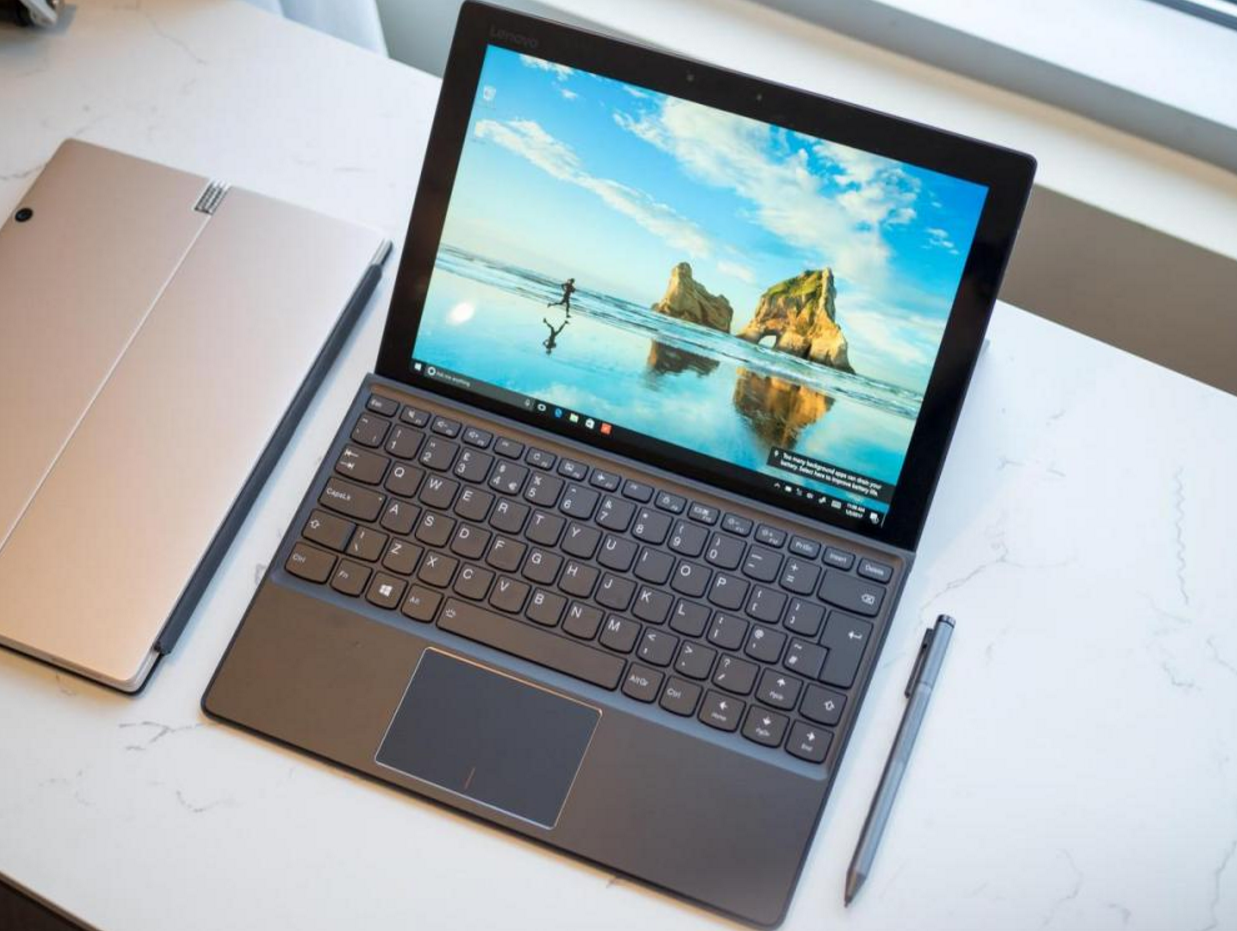

Photo: source
Another example of a device as close as possible to a laptop, but more portable, is Ockel Sirius A Pro. The very thick tablet with a 6-inch touchscreen is equipped with an Intel Atom x7 processor, 8 gigabytes of RAM and 128 GB SSD and runs on Windows 10 Pro. You can simply carry the gadget with you as a portable PC and, if necessary, connect it to a normal monitor.
Now a startup is raising money for production using Indiegogo. And the plan has already been exceeded by 300%.
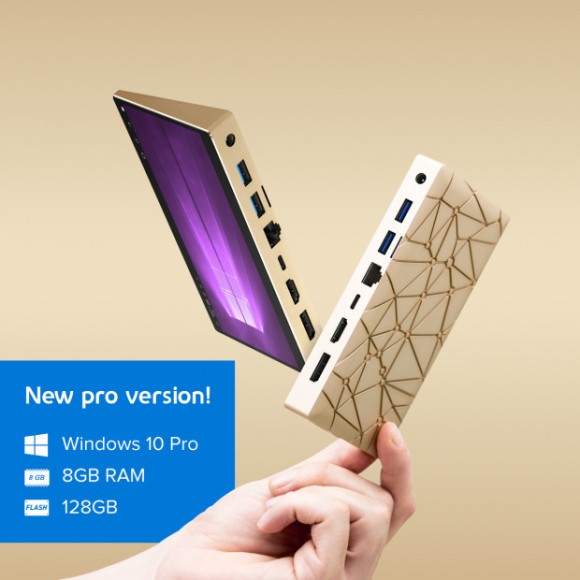
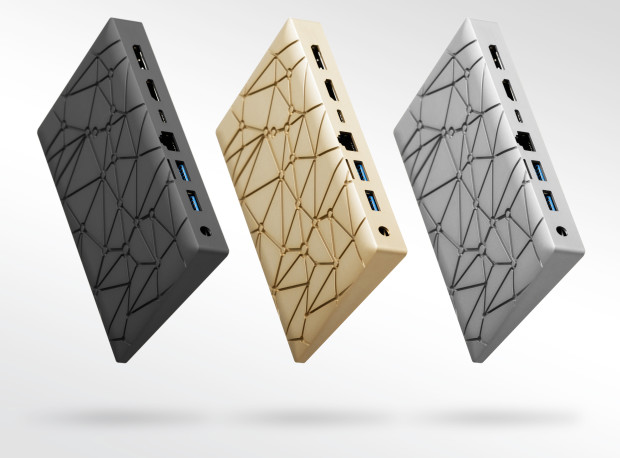
Yoga Book - a little less than the usual gadget. Here we have a transformer, like Yoga, only without a physical keyboard.
Immediately the question arises: is it convenient to type on it? Less convenient than the standard keyboard. But the keyboard Halo is learning. I tested it on myself when the gadget was presented in Moscow - even in English I managed to print pretty quickly. The Engadget publication does not agree with this and called the Yoga Book one of the worst gadgets of 2016 .
When the opportunity appears (in the form of this device), I want to conduct an experiment and measure the print speed, comparing it with a regular laptop or keyboard from a PC.
The advantage of the device is its portability: the Yoga Book weighs 690 grams, approximately as a tablet of the same size.
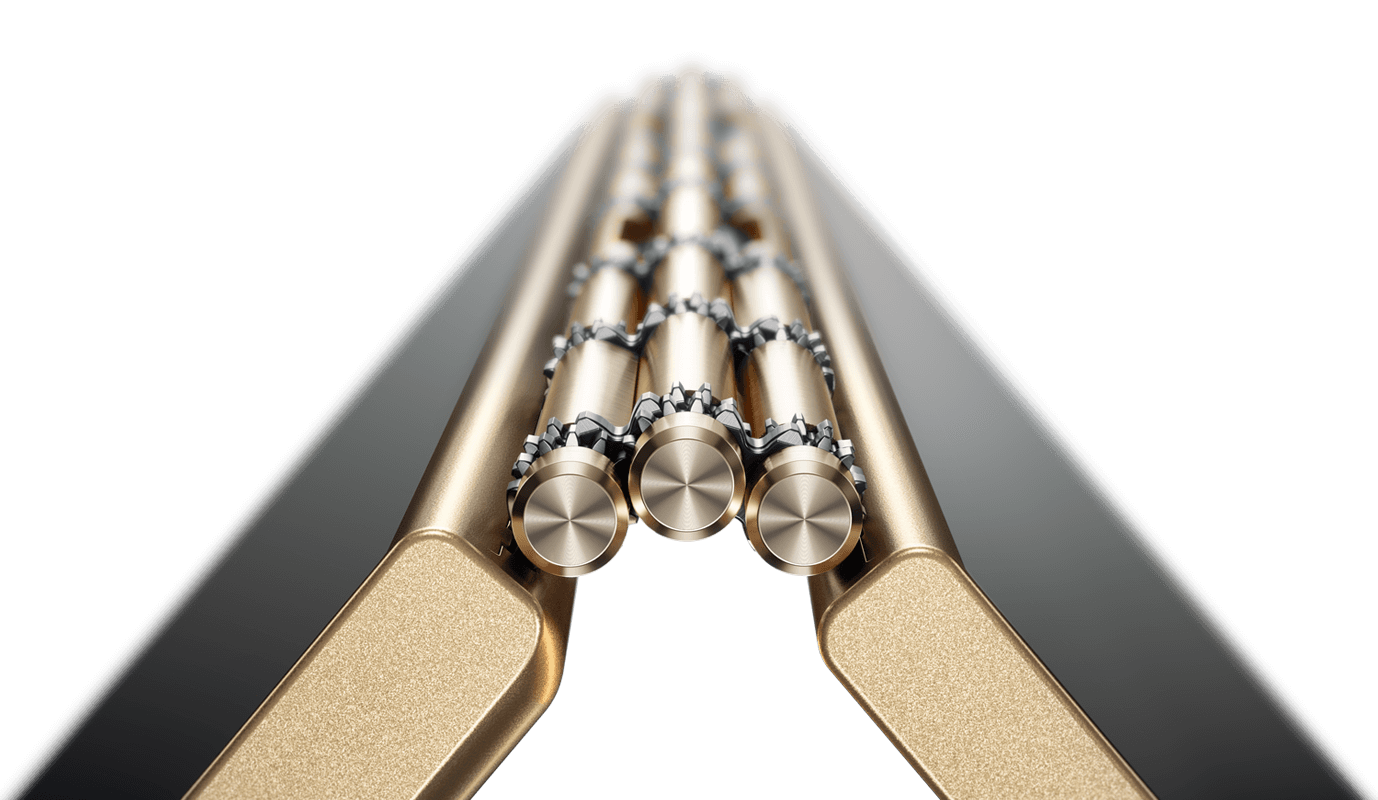
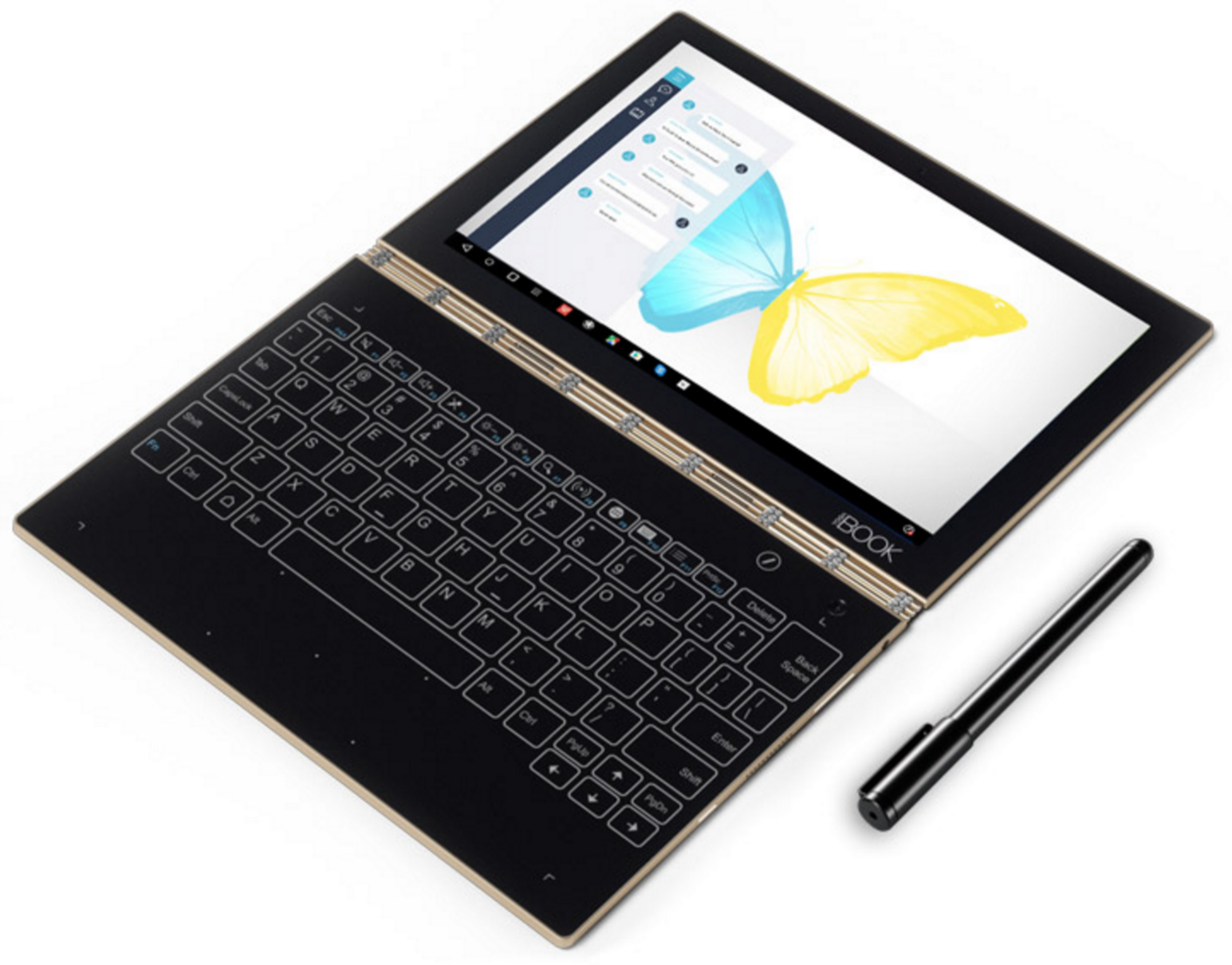
The device recognizes 2048 variants of the Real Pen.
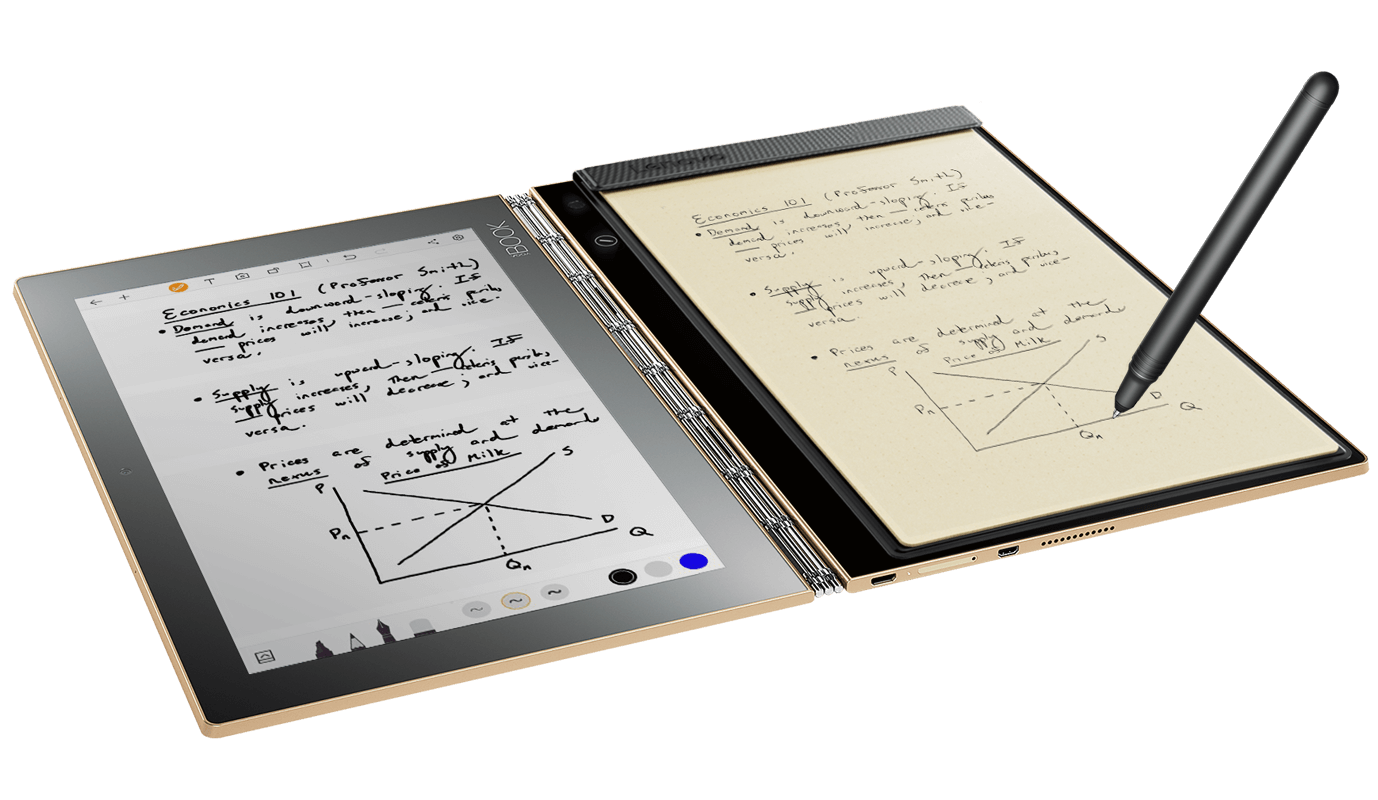
In 2014, Lenovo introduced a line of gaming laptops and computers. By CES 2017, the company launched a new brand - Legion. The first laptops of the updated line were Lenovo Legion Y520 and Y720.
Both laptops received 15.6-inch displays, but the Y720 can have a resolution of 3840x2160 pixels instead of the standard 1920x1080.
The Y520 runs on the seventh-generation Intel Core i7 processor, boasts the latest NVIDIA GTX 1050 Ti graphics card, which was also introduced at CES this year, up to 16 gigabytes of RAM and 512 GB SSD or 2 TB HDD.
Y720 got the same processor, NVIDIA GeForce GTX 1060 graphics card with 6 GB of memory, up to 16 GB of RAM. It weighs more - 3.2 kg versus 2.4 kg for Y520.
Razer decided not to waste time on trifles, and instead of a single display with 1920x1080 pixels, three 17-inch Ultra HD screens were built into a Project Valerie laptop at once - 3840x2160 pixels each. The total resolution is 11520x2160
In this gaming notebook, NVIDIA GeForce GTX 1080 is responsible for the graphics. The gadget weighs almost five and a half kilograms. Details about the other parameters of the device at the moment no. It remains to hope that the laptop will come out of the state of the concept and begin to be released in the near future.
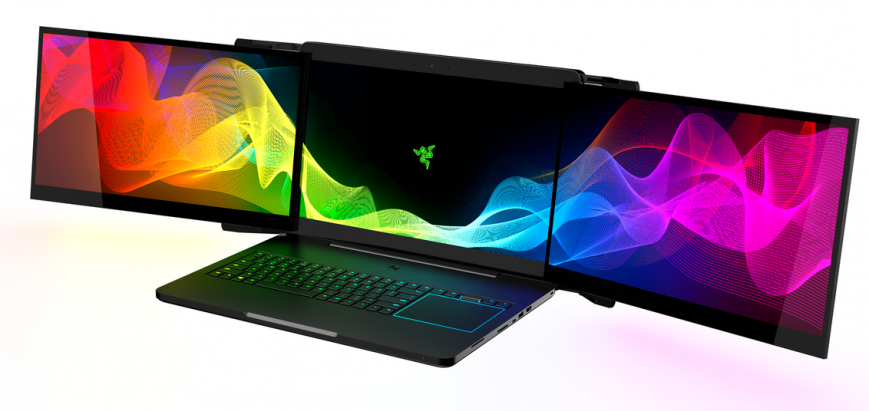
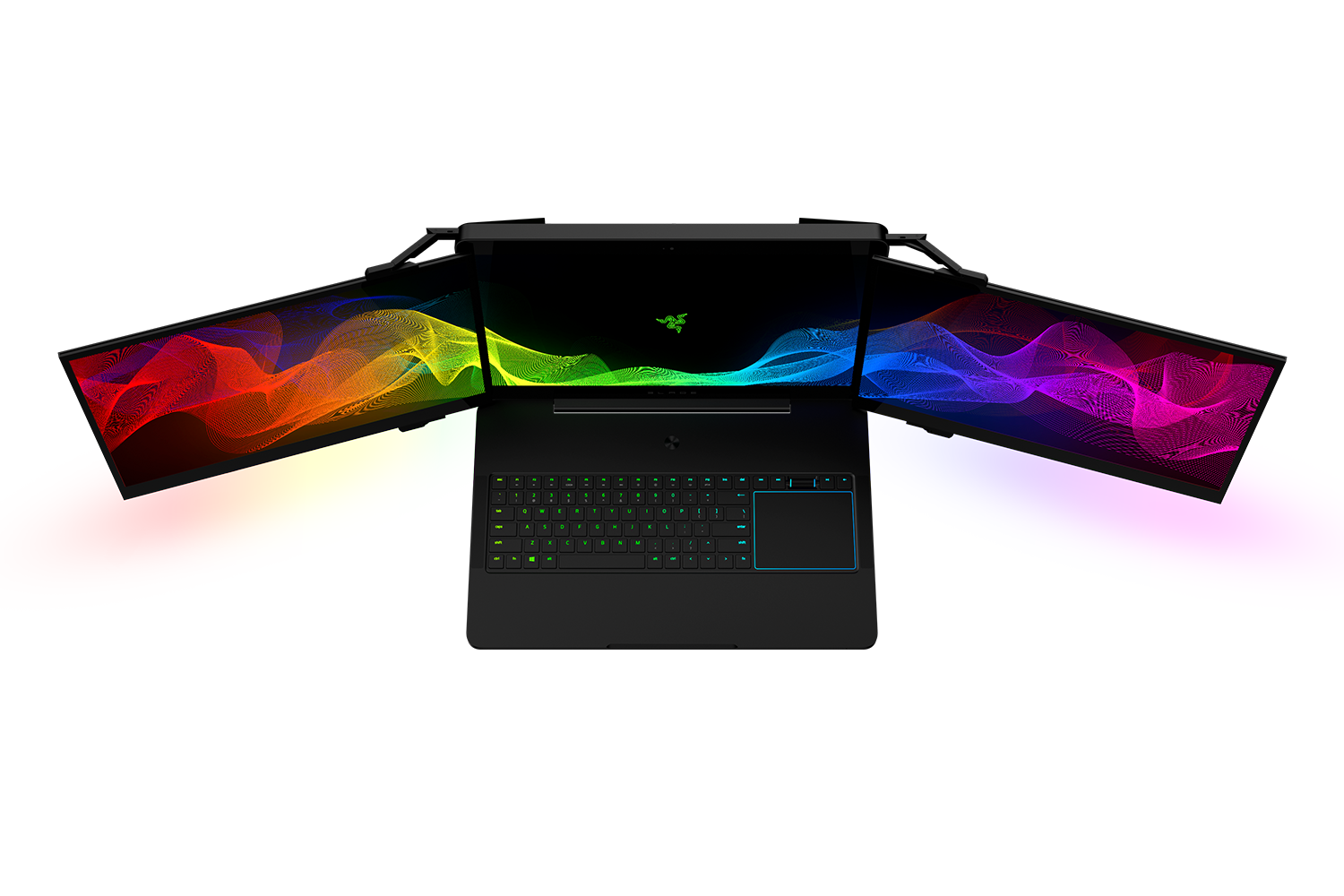
Acer, instead of equipping a gaming laptop with a 17-inch display, chose a 21-inch. And curved. Predator 21 X looks even more futuristic and coarse than the above mentioned new items. And it costs more - 9 thousand dollars, and weighs more - 8.8 kilograms.
The screen resolution is 2560x1080 pixels, two Nvidia GeForce GTX 1080 cards are responsible for the video, the processor is the seventh generation Intel Core i7. There are also five coolers, four speakers and two subwoofers, a mechanical keyboard and a touchpad that you can reach and flip to get a digital unit.

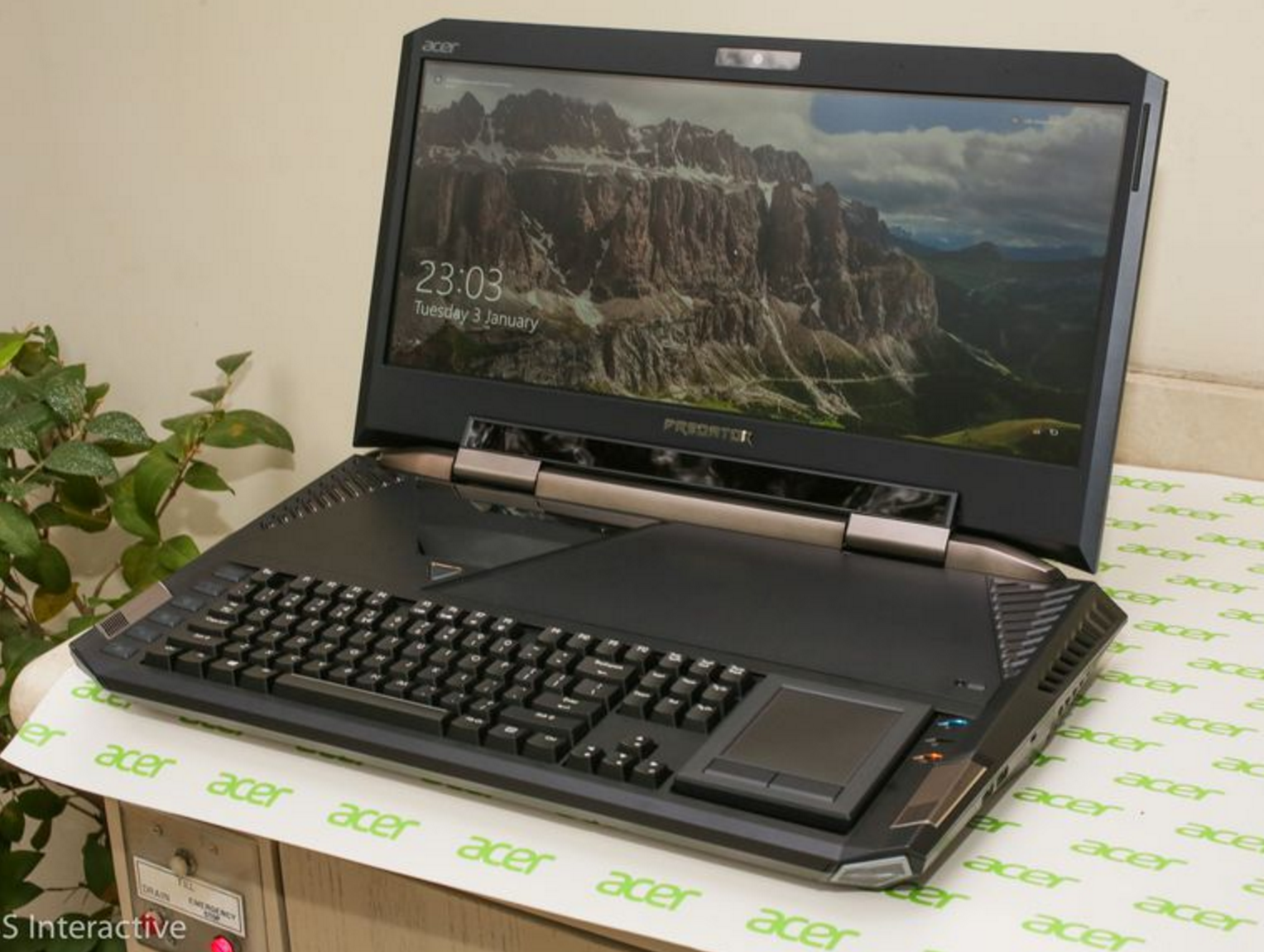
Samsung entered the new market with the Odyssey line of gaming laptops. The lineup includes models with screens diagonal 15.6 and 17.3 inches with a resolution of 1920x1080. RAM - up to 64 gigabytes for the older model and up to 32 gigabytes for the younger one.
In the older model, the RAM reaches 64 gigabytes, in the younger - 32 gigabytes. Processors - up to the seventh generation Intel Core i7.

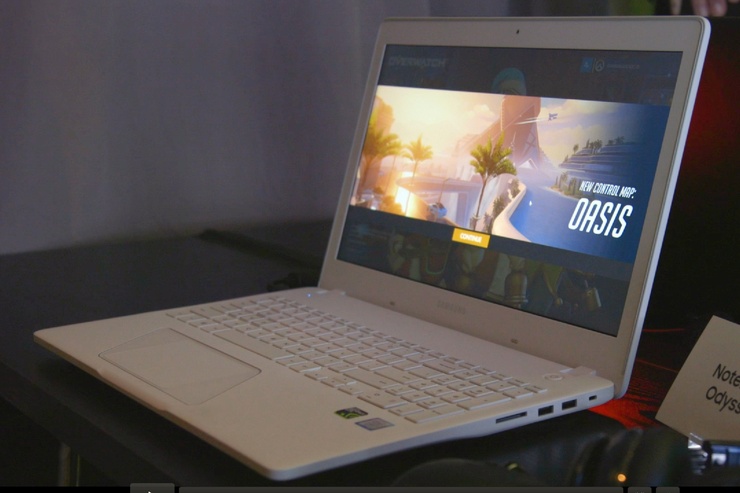

In 2016, Lenovo introduced the Moto Z and Moto Z Play smartphones with the Moto Mods modules connected to them using a magnetic latch.
The modules include: Hasselblad True Zoom with a 12-megapixel sensor, an optical zoom lens and RAW shooting support, an Insta-Share Projector that produces a 70-inch image and transmits audio via Bluetooth, an acoustic panel from JBL and an additional battery.
ASUS brought a ZenFone AR smartphone, customized for work with augmented and virtual reality. The device upon purchase will have Android 7.0 Nougat. If Lenovo Phab 2 Pro was the first smartphone with Google Tango, then ZenFone AR combined this platform and Daydream VR in itself.
The smartphone received a quad-core Qualcomm Snapdragon 821 processor with a frequency of 2.4 GHz, 8 gigabytes of RAM (the first in the world) and up to 256 gigabytes of built-in, 5.7-inch screen with a resolution of 2560x1440. This hardware, along with a 23-megapixel camera, depth and motion sensors, should support the operation of augmented reality applications, such as Lowe's Vision , for measuring indoor distances and visualizing furniture placement, and Slingshot Island , which turns a smartphone into a slingshot for you could shoot dragon eggs.
The only negative is a 3300 mAh battery. So it will be necessary to test the gadget to understand how long it will last.
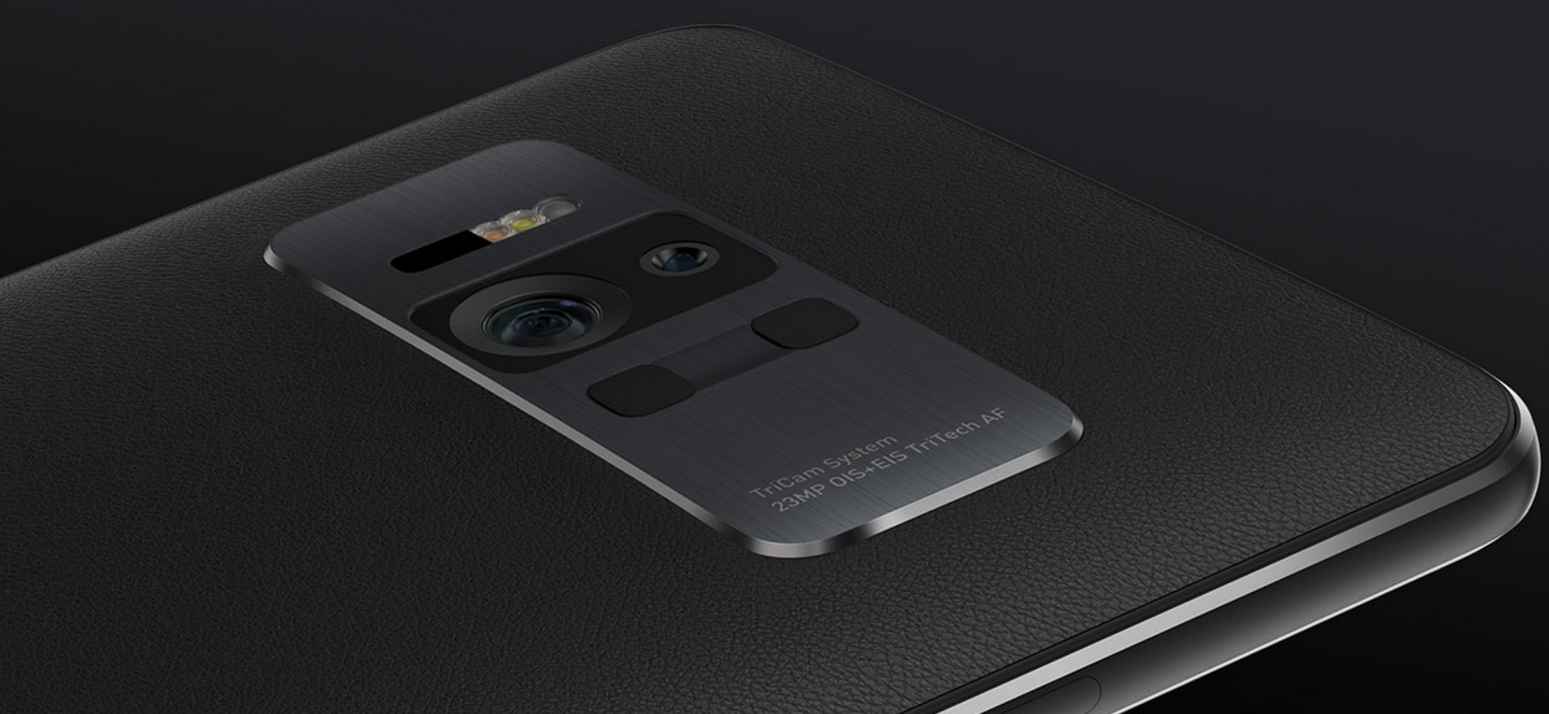
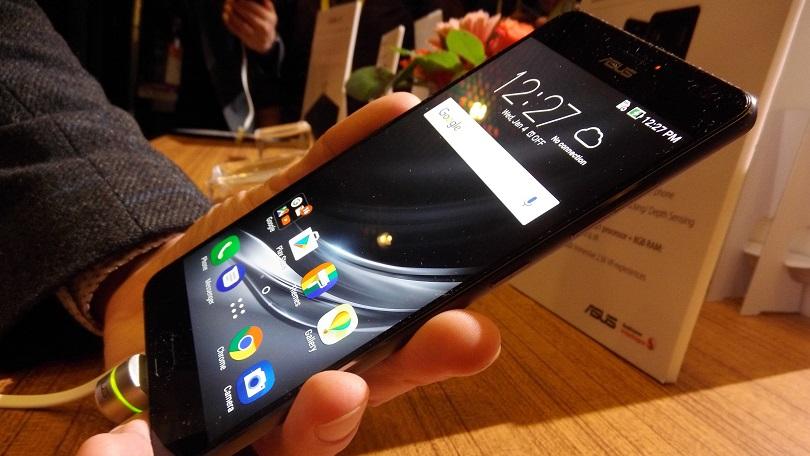
Another smartphone sharpened for Daydream VR introduced ZTE. This is an Axon 7 with a Qualcomm Snapdragon 820 processor with a frequency of 2.15 GHz, 4 GB or 6 GB of RAM, 64 GB or 128 GB of internal memory, a 5.5-inch AMOLED screen with a resolution of 2560x1440 pixels.
According to ZTE, the battery at 3250 mAh will ensure the operation of the device in talk mode lasting for a day.
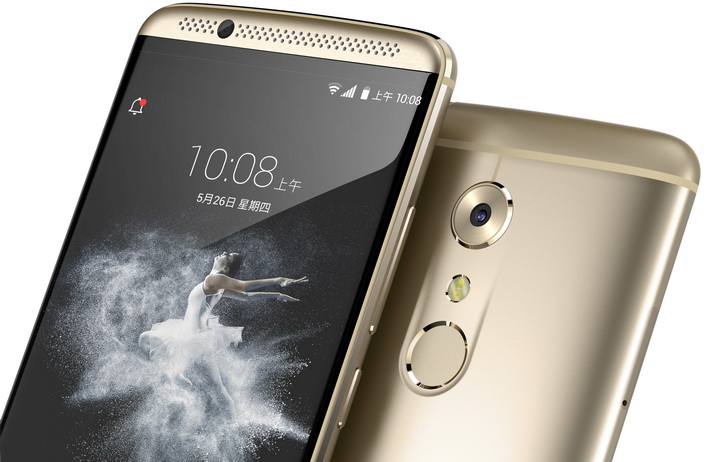

In 2017, at CES, the most popular topics were not wearable gadgets, but augmented and virtual reality. But it is not enough one phones only - so the motion control devices and many virtual reality glasses came from the exhibition - from HP, Lenovo, Dell, Asus, Acer.
This is what Dell glasses look like.

Acer introduced the helmet in red.
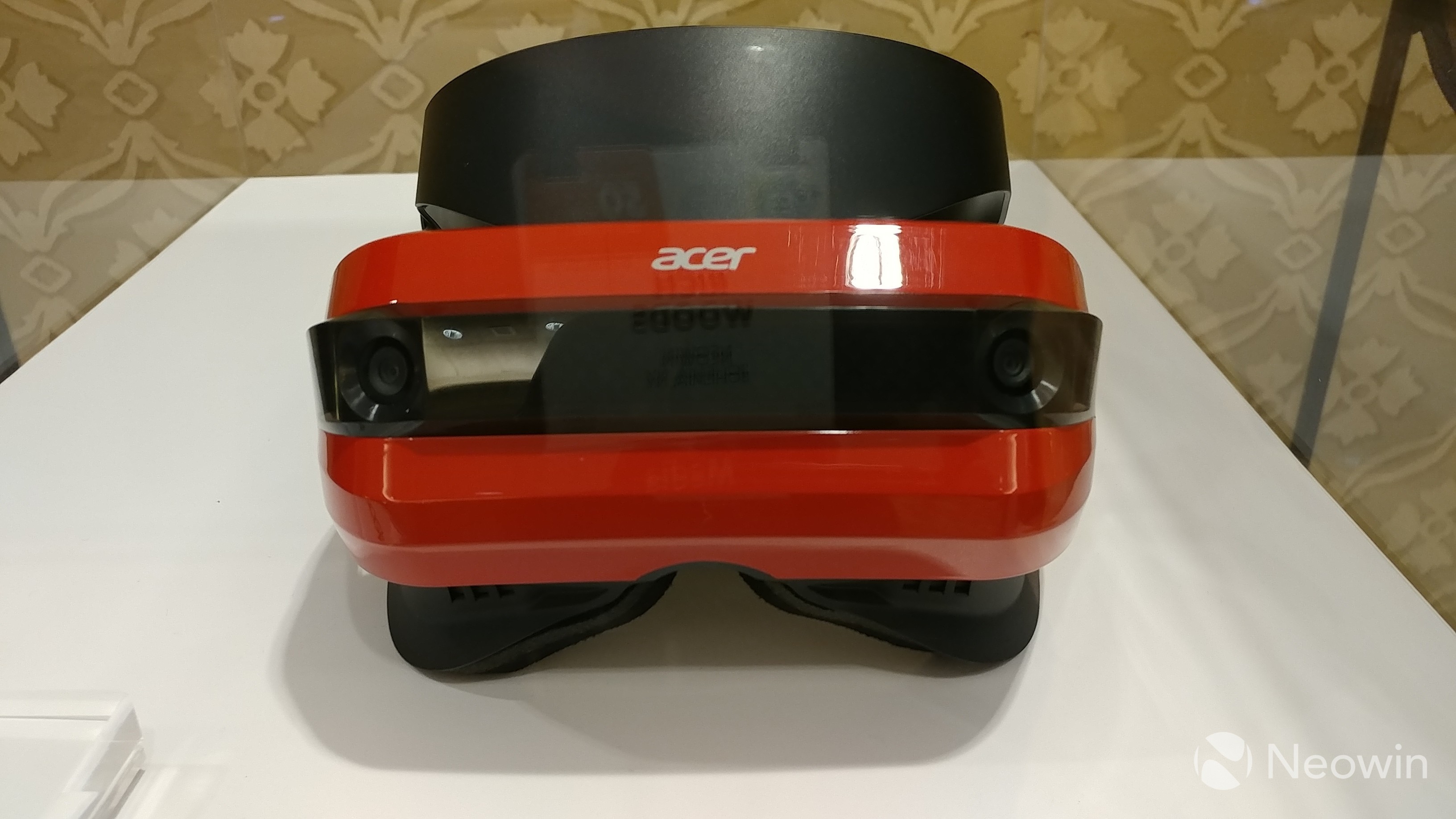
Lenovo added two cameras to the helmet so that it would not have to use external devices.
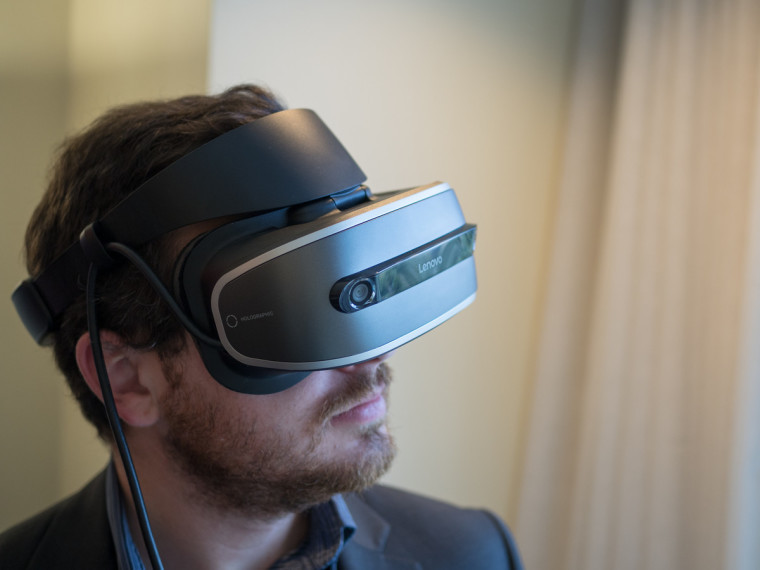
Photo: source
And Huawei did not stand aside. But again we are talking about a helmet whose brain is a smartphone.

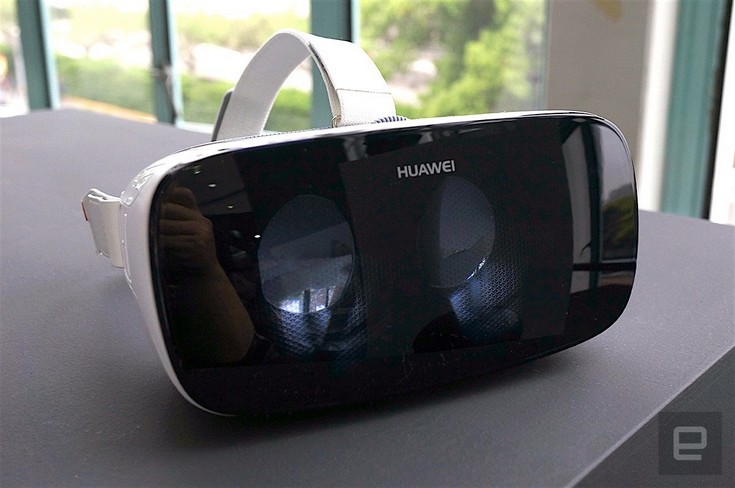
Now about augmented reality. Lenovo has added New Glass C200 smart glasses and software for augmented reality to its portfolio. Once Google Glass failed as a mass product, but doctors using this gadget tried to treat autism and help people with Parkinson's disease , and the police - to deal with violators of traffic rules . That is, there is a sense in such devices, and the most important thing is to choose the right target audience.
Glasses from Lenovo consist of two modules: the actual monocular glasses and the main unit Pocket Unit, which is mounted on a belt or put in a pocket. After downloading the New Glass application to a smartphone, you can connect a device to it and thus increase the power, as well as add 4G support to the glasses.
This gadget is useful in situations like the repair of equipment on the International Space Station. The work uses the artificial intelligence system Lenovo NBD Martin, which with the help of cameras and sensors detects objects - for example, the details under the hood of the car. Points are positioned (and look) as an industrial gadget - and this, based on previous negative experiences from Google, may affect commercial success.
Glasses weigh less than 60 grams. The batch production of the gadget should start in June 2017. For developers, a platform created Lenovo NBD Titan.
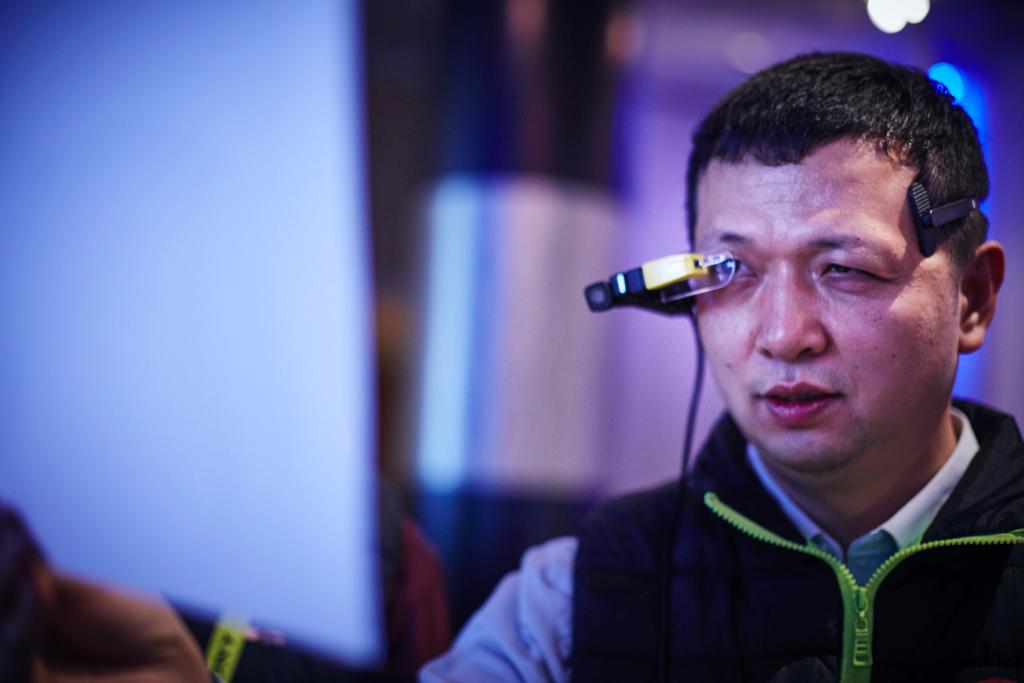

LG introduced several robots - the home LG Hub Robot and Hub Robot Mini with Alexa voice assistant support, Airport Guide Robot airport robot and Airport Cleaning Robot industrial vacuum cleaner.
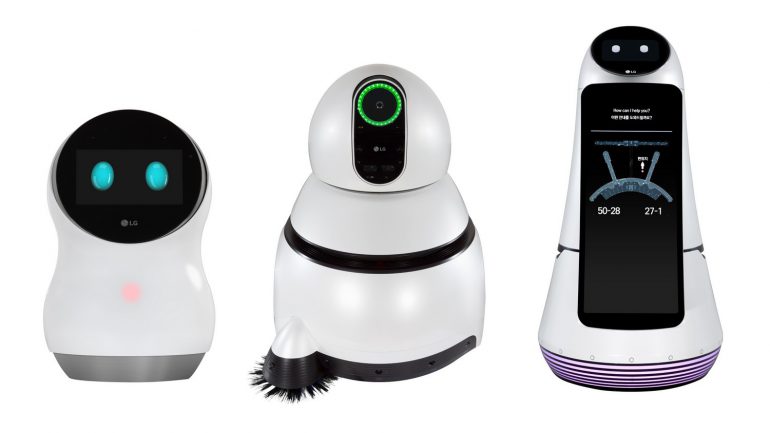
The design of home robots strongly resembles either a matryoshka or a doll. Looks cute.

ThinkPad X1
For some, mobility is important in laptops first. The lighter the device and the longer it is able to work on a single charge - the greater the chance that you will wear it everywhere.
The ultrabook ThinkPad X1 Carbon is the world's lightest 14-inch laptop in the class of corporate devices. Lenovo for CES 2017 has prepared an updated line of devices X1, which includes Yoga X1 transformer and tablet X1 Tablet.
')
The ThinkPad X1 Carbon weighs 1.14 kilograms. In the form factor of a 13-inch ultrabook, Lenovo has placed a 14-inch display - this was done by narrowing the frame. The battery, according to the manufacturer, will work for about 15 hours. Under the hood - the processor of the new generation Intel Core i7 Kaby Lake, up to 16 gigabytes of RAM, up to 1024 gigabytes of SSD. The display resolution is 1920x1080 or 2560x1440. In order to ensure security, an ultrabook was equipped with a fingerprint scanner and a face recognition system.

Lenovo X1 Yoga has similar characteristics and differs only in the presence of a touchscreen display, a transformer form factor, a stylus support and a slightly higher weight - 1.36 kg versus 1.12 kg in a conventional ultrabook.
The ThinkPad X1 Tablet transformer tablet received a 12-inch display with a resolution of 2150x1440 pixels, a 7th generation Intel Core, up to 16 GB of RAM and up to 1024 gigabytes of SSD. Without a keyboard, the X1 weighs 767 grams, with a keyboard - 1.07 kg.



Transformers
Dell introduced its response Lenovo Yoga - a transformer of Dell XPS 13. Mounts company chose the same as used at the beginning of Lenovo and HP 360 - the classic version. The processor in the new ultrabook - Intel Core i5 or i7, up to 16 gigabytes of RAM and up to 1 terabyte of SSD, and screens - Full HD or QuadHD +. The Windows Hello face recognition system is also here, as in Lenovo's X1.


Asus also brought its own transformer, the Chromebook Flip C302A, on Chrome OS. The laptop runs on Core M3 or M7 processors, has a 12.5-inch screen with a resolution of 1920x1080 pixels, 4 or 8 gigabytes of RAM, 32 to 128 gigabytes of SSD. The device will be budget - the price for the lower package will start with $ 500.

Tablets
The line between tablets and laptops is becoming increasingly blurred in terms of technical characteristics. Tablet Lenovo Miix 720 in the maximum configuration is based on the seventh generation Intel Core i7, has 16 gigabytes of RAM and 1024 gigabytes of SSD. The resolution of the 12-inch display is 2880x1920. Here, except that the graphics are integrated - Intel HD Graphics 620. The battery should be enough for 8 hours. All this together with the keyboard weighs 1.1 kilograms, and without the keyboard - 780 grams.


Photo: source
Another example of a device as close as possible to a laptop, but more portable, is Ockel Sirius A Pro. The very thick tablet with a 6-inch touchscreen is equipped with an Intel Atom x7 processor, 8 gigabytes of RAM and 128 GB SSD and runs on Windows 10 Pro. You can simply carry the gadget with you as a portable PC and, if necessary, connect it to a normal monitor.
Now a startup is raising money for production using Indiegogo. And the plan has already been exceeded by 300%.


Transformer Yoga Book
Yoga Book - a little less than the usual gadget. Here we have a transformer, like Yoga, only without a physical keyboard.
Immediately the question arises: is it convenient to type on it? Less convenient than the standard keyboard. But the keyboard Halo is learning. I tested it on myself when the gadget was presented in Moscow - even in English I managed to print pretty quickly. The Engadget publication does not agree with this and called the Yoga Book one of the worst gadgets of 2016 .
When the opportunity appears (in the form of this device), I want to conduct an experiment and measure the print speed, comparing it with a regular laptop or keyboard from a PC.
The advantage of the device is its portability: the Yoga Book weighs 690 grams, approximately as a tablet of the same size.


The device recognizes 2048 variants of the Real Pen.

Gaming laptops
In 2014, Lenovo introduced a line of gaming laptops and computers. By CES 2017, the company launched a new brand - Legion. The first laptops of the updated line were Lenovo Legion Y520 and Y720.
Both laptops received 15.6-inch displays, but the Y720 can have a resolution of 3840x2160 pixels instead of the standard 1920x1080.
The Y520 runs on the seventh-generation Intel Core i7 processor, boasts the latest NVIDIA GTX 1050 Ti graphics card, which was also introduced at CES this year, up to 16 gigabytes of RAM and 512 GB SSD or 2 TB HDD.
Y720 got the same processor, NVIDIA GeForce GTX 1060 graphics card with 6 GB of memory, up to 16 GB of RAM. It weighs more - 3.2 kg versus 2.4 kg for Y520.
Razer decided not to waste time on trifles, and instead of a single display with 1920x1080 pixels, three 17-inch Ultra HD screens were built into a Project Valerie laptop at once - 3840x2160 pixels each. The total resolution is 11520x2160
In this gaming notebook, NVIDIA GeForce GTX 1080 is responsible for the graphics. The gadget weighs almost five and a half kilograms. Details about the other parameters of the device at the moment no. It remains to hope that the laptop will come out of the state of the concept and begin to be released in the near future.


Acer, instead of equipping a gaming laptop with a 17-inch display, chose a 21-inch. And curved. Predator 21 X looks even more futuristic and coarse than the above mentioned new items. And it costs more - 9 thousand dollars, and weighs more - 8.8 kilograms.
The screen resolution is 2560x1080 pixels, two Nvidia GeForce GTX 1080 cards are responsible for the video, the processor is the seventh generation Intel Core i7. There are also five coolers, four speakers and two subwoofers, a mechanical keyboard and a touchpad that you can reach and flip to get a digital unit.


Samsung entered the new market with the Odyssey line of gaming laptops. The lineup includes models with screens diagonal 15.6 and 17.3 inches with a resolution of 1920x1080. RAM - up to 64 gigabytes for the older model and up to 32 gigabytes for the younger one.
In the older model, the RAM reaches 64 gigabytes, in the younger - 32 gigabytes. Processors - up to the seventh generation Intel Core i7.



Smartphones
In 2016, Lenovo introduced the Moto Z and Moto Z Play smartphones with the Moto Mods modules connected to them using a magnetic latch.
The modules include: Hasselblad True Zoom with a 12-megapixel sensor, an optical zoom lens and RAW shooting support, an Insta-Share Projector that produces a 70-inch image and transmits audio via Bluetooth, an acoustic panel from JBL and an additional battery.
ASUS brought a ZenFone AR smartphone, customized for work with augmented and virtual reality. The device upon purchase will have Android 7.0 Nougat. If Lenovo Phab 2 Pro was the first smartphone with Google Tango, then ZenFone AR combined this platform and Daydream VR in itself.
The smartphone received a quad-core Qualcomm Snapdragon 821 processor with a frequency of 2.4 GHz, 8 gigabytes of RAM (the first in the world) and up to 256 gigabytes of built-in, 5.7-inch screen with a resolution of 2560x1440. This hardware, along with a 23-megapixel camera, depth and motion sensors, should support the operation of augmented reality applications, such as Lowe's Vision , for measuring indoor distances and visualizing furniture placement, and Slingshot Island , which turns a smartphone into a slingshot for you could shoot dragon eggs.
The only negative is a 3300 mAh battery. So it will be necessary to test the gadget to understand how long it will last.


Another smartphone sharpened for Daydream VR introduced ZTE. This is an Axon 7 with a Qualcomm Snapdragon 820 processor with a frequency of 2.15 GHz, 4 GB or 6 GB of RAM, 64 GB or 128 GB of internal memory, a 5.5-inch AMOLED screen with a resolution of 2560x1440 pixels.
According to ZTE, the battery at 3250 mAh will ensure the operation of the device in talk mode lasting for a day.


Wearable gadgets
In 2017, at CES, the most popular topics were not wearable gadgets, but augmented and virtual reality. But it is not enough one phones only - so the motion control devices and many virtual reality glasses came from the exhibition - from HP, Lenovo, Dell, Asus, Acer.
This is what Dell glasses look like.

Acer introduced the helmet in red.

Lenovo added two cameras to the helmet so that it would not have to use external devices.

Photo: source
And Huawei did not stand aside. But again we are talking about a helmet whose brain is a smartphone.


Now about augmented reality. Lenovo has added New Glass C200 smart glasses and software for augmented reality to its portfolio. Once Google Glass failed as a mass product, but doctors using this gadget tried to treat autism and help people with Parkinson's disease , and the police - to deal with violators of traffic rules . That is, there is a sense in such devices, and the most important thing is to choose the right target audience.
Glasses from Lenovo consist of two modules: the actual monocular glasses and the main unit Pocket Unit, which is mounted on a belt or put in a pocket. After downloading the New Glass application to a smartphone, you can connect a device to it and thus increase the power, as well as add 4G support to the glasses.
This gadget is useful in situations like the repair of equipment on the International Space Station. The work uses the artificial intelligence system Lenovo NBD Martin, which with the help of cameras and sensors detects objects - for example, the details under the hood of the car. Points are positioned (and look) as an industrial gadget - and this, based on previous negative experiences from Google, may affect commercial success.
Glasses weigh less than 60 grams. The batch production of the gadget should start in June 2017. For developers, a platform created Lenovo NBD Titan.


LG robots
LG introduced several robots - the home LG Hub Robot and Hub Robot Mini with Alexa voice assistant support, Airport Guide Robot airport robot and Airport Cleaning Robot industrial vacuum cleaner.

The design of home robots strongly resembles either a matryoshka or a doll. Looks cute.
Source: https://habr.com/ru/post/400407/
All Articles